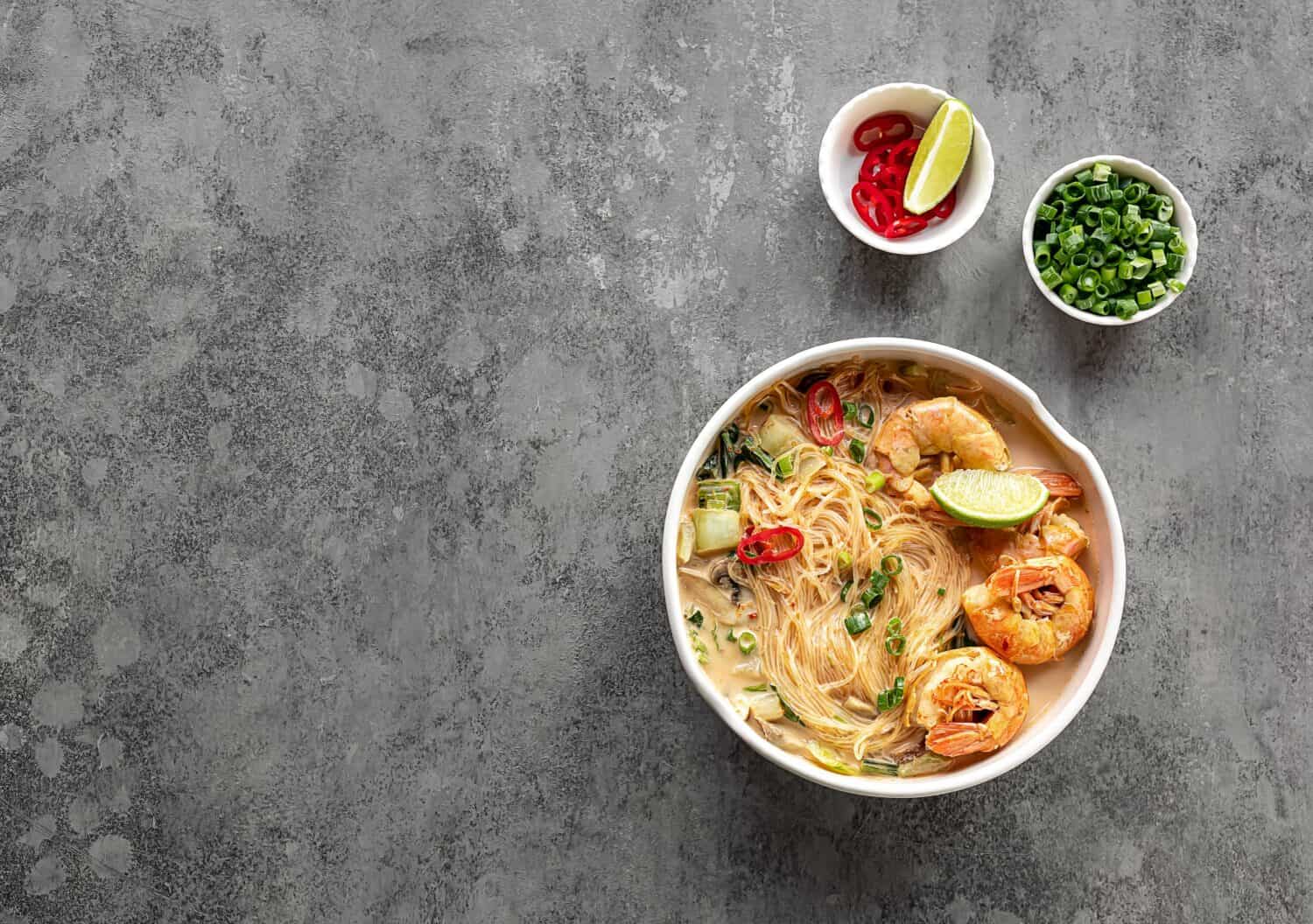Noodles are a staple in Asian cuisine and no matter what type of dish you’re making, there are numerous varieties of noodles to choose from. Two common types of Asian noodles are glass noodles and rice noodles. If you've ever wondered the difference between them, keep reading.
The most significant difference between glass noodles and rice noodles is their ingredients. Rice noodles are made from rice flour while glass noodles are made from a type of starch such as mung bean starch. Glass noodles, also known as cellophane noodles, are normally translucent while rice noodles are opaque and white in color.
From soups to salads, there are many ways to use both types of noodles. Let's take a look at the difference in ingredients and nutritional values of glass noodles vs. rice noodles.
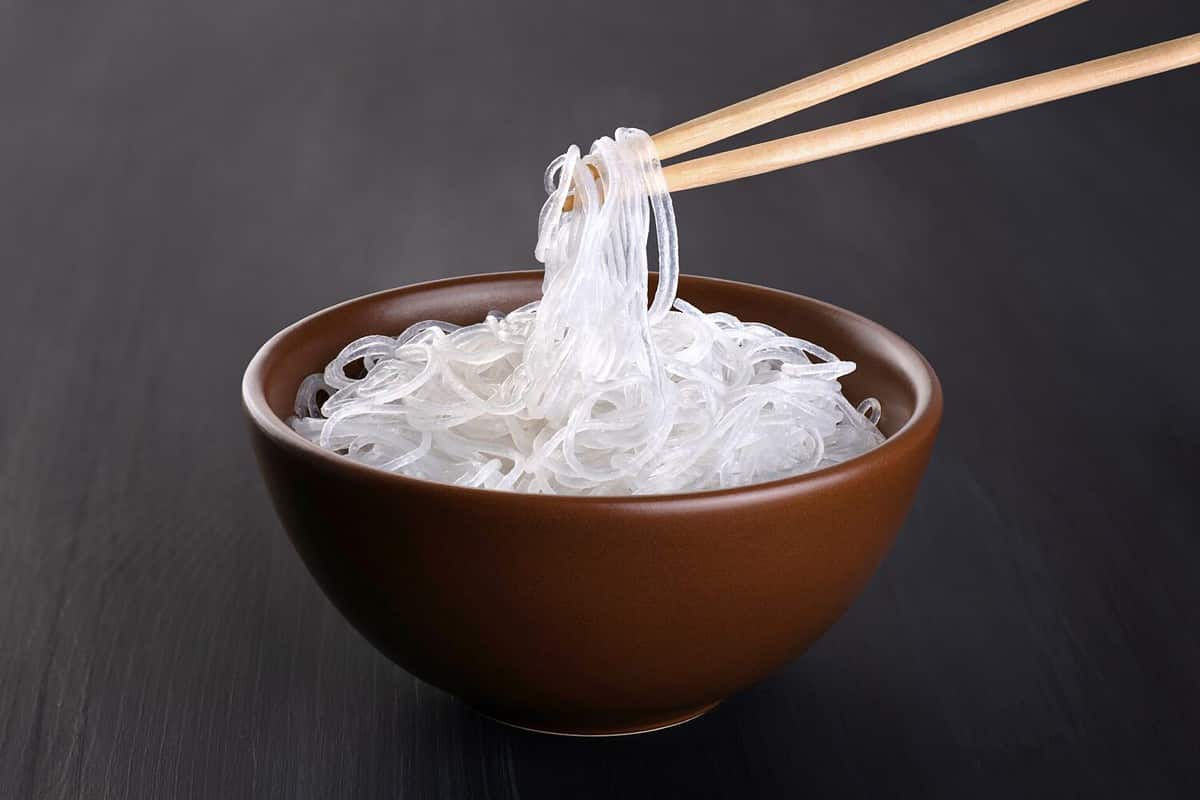
Compared to rice noodles, glass noodles are typically translucent.
©vitals/Shutterstock.com
Glass Noodles vs. Rice Noodles: What Is the Difference?
Whether you’re ordering out or making a noodle-based dish at home, there are so many types of noodles out there that it can be hard to keep track. Two of the most popular noodles are glass noodles and rice noodles.
Even though one can be substituted for the other in many dishes, there are a lot of differences between glass noodles and rice noodles. Their differences include their ingredients, flavor, texture, and nutritional value.
Rice noodles are made from rice flour and water. They come in a variety of sizes, but no matter their size, they’re usually white and opaque once they’re dry. The most common type of rice noodle is known as a vermicelli noodle, which is a thin noodle used in dishes such as pho or pad thai.
On the other hand, glass noodles are made from a type of starch. Most commonly, they’re made from mung bean starch but there are other varieties, such as Korean glass noodles, that are made with sweet potato starch. What the different varieties of glass noodles have in common is their translucent appearance. Even Korean glass noodles are translucent, but with a grayish tint to them.
3 Key Differences between Glass Noodles and Rice Noodles
When considering how glass noodles differ from rice noodles, remember the following:
- Ingredients: While glass noodles are made from starch such as mung bean starch or potato starch, rice noodles are made from rice flour.
- Appearance: Glass noodles, true to their name, are usually see-through while rice noodles are opaque.
- Texture: Both glass noodles and rice noodles have a chewy texture, but glass noodles are thinner and more delicate than rice noodles. Rice noodles are slightly firmer but easier to break.
What Are Glass Noodles?
Glass noodles, also known as cellophane noodles, are a type of noodle made from a specific starch. They’re most frequently made from mung bean starch but they can also be made from potato starch.
When you cook glass noodles, they’re practically see-through, though they may take on a different shade such as white or yellow. They’re also sometimes called bean threads or in Chinese cuisine, they’re called fensi. Glass noodles are mostly flavorless, but they do absorb the flavors of the dish they’re in.
These noodles are common in Asian dishes and can be used in various meals from soups to stir-fries. Glass noodles have a jelly-like texture and are also very thin. Due to their thinness, they can be cooked in 5 minutes or less when soaked or cooked in boiling water. This incredibly versatile noodle is perfect for soups, stir-fries, or hot pot. They can also be served cold in a salad or spring roll.
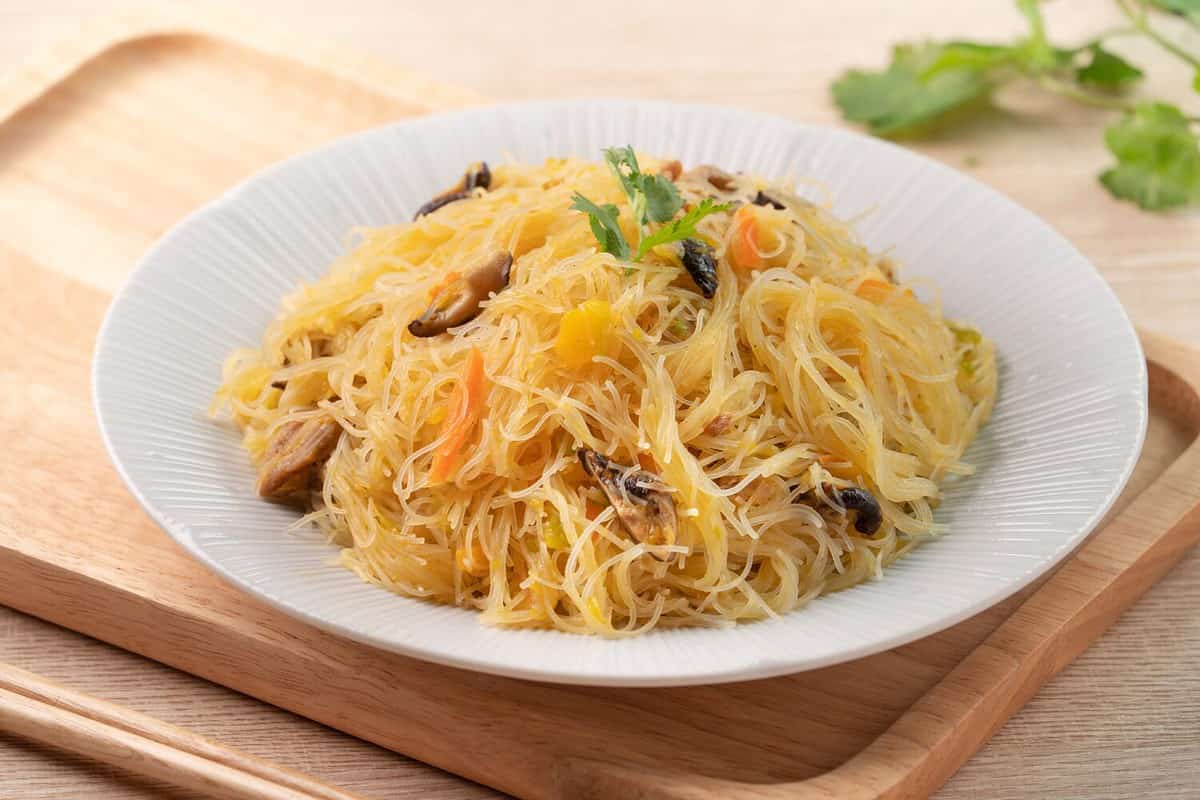
Rice noodles come in a variety of sizes, but they're all made from the same ingredients of rice flour and water.
©YamisHandmade/Shutterstock.com
What Are Rice Noodles?
Rice noodles are a type of Asian noodle made from rice flour. They sometimes have additional ingredients such as tapioca or corn starch, which make the texture of the noodles chewier, but generally, their main ingredients are rice flour and water.
Rice noodles can be traced back to the Qin Dynasty in China when they were created as an alternative to noodles made from wheat flour. There are endless recipes for rice noodle dishes, but you can also use them to replace wheat noodles in many dishes.
These noodles come in a variety of types and sizes such as flat noodles or vermicelli noodles. You can purchase rice noodles fresh, frozen, or dried, although the shelf life of fresh noodles is usually only a few days. They have a sweet and almost nutty flavor that complements the seasoning in a variety of recipes.
Which Is Healthier: Glass Noodles or Rice Noodles?
Both glass noodles and rice noodles can be healthy additions to your diet. Rice noodles are relatively low in calories, especially in comparison to wheat-based noodles. Rice noodles are also gluten-free, so they’re a great alternative for those with celiac disease or gluten sensitivity. They’re also low in sodium and a good source of selenium.
Glass noodles don’t have many nutrients, but they can be a great way to increase your carb intake without causing a spike in your blood sugar. Their low-glycemic index means they have a minimal effect on your sugar levels, and they’re also low in fat.
There are benefits to both types of noodles, so which one is healthier for you may depend on your diet and what dish you choose to include glass or rice noodles in.
Nutritional Values of Glass Noodles vs. Rice Noodles
| Nutritional Values | Glass Noodles (1 Cup) | Rice Noodles (1 Cup) |
| Calories | 161 | 192 |
| Protein | 0.1 g | 1.6 g |
| Total Fat | 0.1 g | 0.4 g |
| Sodium | 10 mg | 33 mg |
| Cholesterol | 0 mg | 0 mg |
| Carbs | 40 g | 44 g |
| Potassium | 14 mg | 7 mg |
Can You Substitute Glass Noodles for Rice Noodles?
Considering the differences between glass and rice noodles, you may wonder if you can use them interchangeably. Even though they do differ in many ways, you can use glass noodles in place of rice noodles and vice versa.
Rice noodles do have a tendency to break easier than glass noodles and tend to stick together easier. While glass noodles don’t have much flavor on their own, they will soak up the flavor of the rest of your dish. On the other hand, rice noodles have more flavor on their own and bring a sweeter flavor to the dish.
You can soak both types of noodles before cooking to make them a bit softer, but keep an eye on the cooking times. While glass noodles usually only need 3-5 minutes to cook, rice noodles need closer to 4-6 minutes. Also, keep in mind the instructions and cooking times may vary depending on the type of glass or rice noodle and the dish you’re preparing.
Takeaway
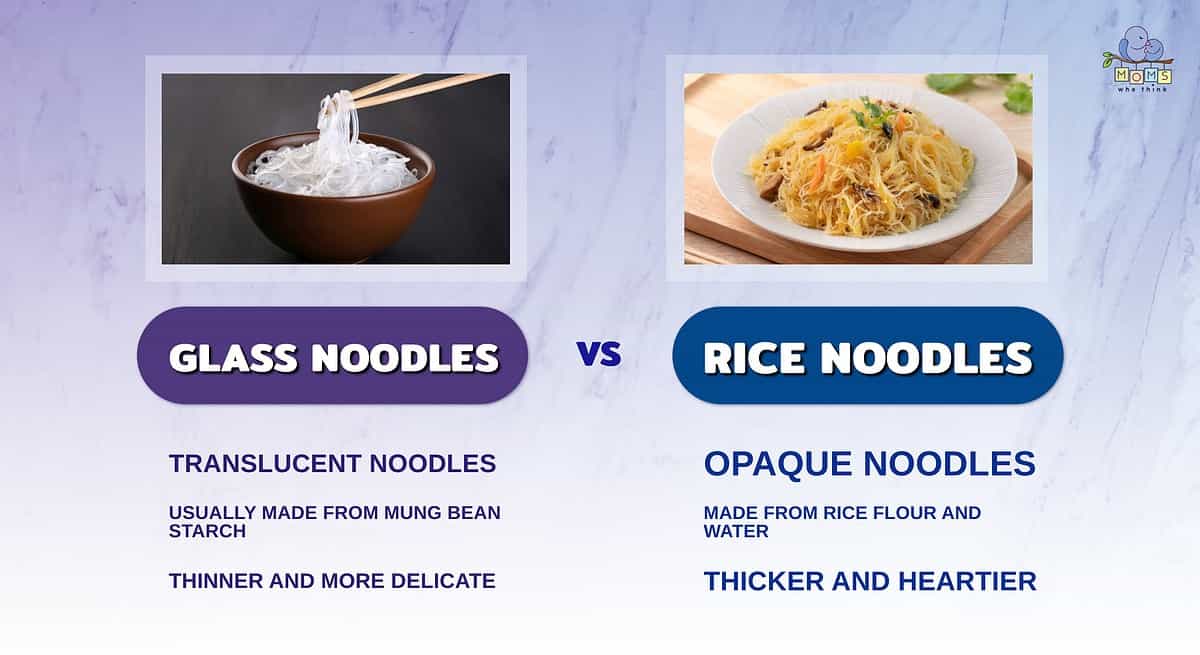
- Rice noodles, like most noodle types, are opaque. Glass noodles are highly unique among noodles in that they're transparent.
- Glass noodles are usually made from mung bean starch, but may also be made from a different type of starch. Meanwhile, rice noodles are made from rice flour and water.
- Rice noodles are thicker and heartier than glass noodles.
When you’re trying to decide what type of noodle to choose for your soup or stir-fry, you might consider the differences between glass noodles vs. rice noodles. Noodles like these used to be available only in specialty stores, but as they’ve become more popular, you can usually find them in the aisles of most grocery stores.
While both types of noodles are delicious in various meals, there are many differences between them. Rice noodles are made from rice flour while glass noodles are made from mung bean starch or potato starch. They both have a slightly chewy texture, but rice noodles tend to be more firm than glass noodles.
Which noodle works best depends on your preferences and what dish you’re making. All in all, both glass and rice noodles can be a tasty base or side for your next meal.
Try this wonderful Asian Noodle Bowl recipe:
Print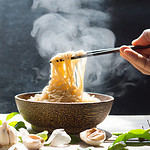
Asian Noodle Bowl with Rice Noodles
Ingredients
8 ounce dry rice noodles
2 cups vegetables broth
1/2 cup bottled peanut sauce
2 cups Chinese-style frozen stir-fry vegetables
1/2 cup dry roasted peanuts, chopped
Instructions
1. Cook noodles according to package directions; drain but do not rinse. Set aside.
2. In the same pan, combine broth and peanut sauce. Bring to a boil.
3. Stir in frozen vegetables and cooked noodles, return to boil, reduce heat.
4. Simmer for 2 to 3 minutes or until vegetables are heated through.
5. Divide noodles and broth among 4 bowls.
6. Sprinkle with peanuts.
The image featured at the top of this post is ©Jane Vershinin/Shutterstock.com
